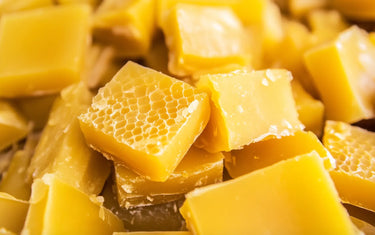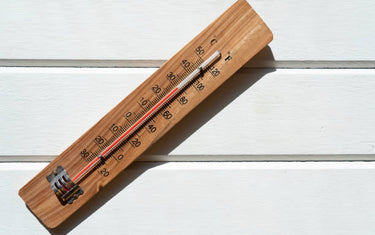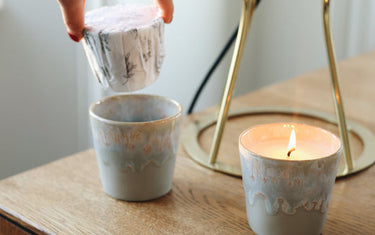3 min read / 4 April 2022 / Caitlin Devlin
Antispasmodic essential oils: what are they and how can they relieve pain?
Antispasmodics can be useful for those who suffer from menstrual cramps or IBS.
Share this post

Antispasmodic essential oils are often referred to in discussions about muscle pain and stomach cramps.
These oils can be calming and soothing, reducing muscle pain after overexertion and helping us to resume normal functioning. But how do they work?
In this article we’ll break down which essential oils have antispasmodic benefits and what they can do for your wellness.

What is an antispasmodic?Antispasmodics are substances that help to prevent muscle spasms. By calming these spasms, antispasmodics can relieve pain and discomfort in a number of ways and prevent disruption to our daily lives. The term ‘antispasmodic’ usually applies to a class of drugs prescribed by medical professionals to reduce the severity of cramping. However, some essential oils also have natural antispasmodic properties. |
Why are antispasmodic essential oils useful?
Antispasmodic essential oils can benefit our health in a number of ways. Their most common use is in the treatment of cramps.
Muscle cramps can often occur after exercise when the muscle has been overused or strained in some way. They can be very painful and prevent us from going about our normal business.
Massaging the affected muscle with a diluted antispasmodic essential oil can prevent painful spasms in the stiff muscle and help to relax it, relieving pain. They can also relieve cramps in the stomach and abdominal area, including menstrual cramps.
Rubbing a diluted antispasmodic essential oil on the abdomen and letting it absorb into the skin can soothe spasming muscles and help to reduce the severity of the cramps.
Antispasmodic oils have also been used to treat other conditions. They can ease symptoms of irritable bowel syndrome, or IBS, by relaxing the muscle of the bowel wall. This relieves bloating and can reduce flatulence.
These oils can also prevent spasms in the chest and inhibit coughing fits, making them a useful balm in cold and flu season.

Which essential oils are antispasmodic?
Many oils have antispasmodic properties. Here are some that we recommend:
- Bay Laurel
- Black Pepper
- Camphor
- Cedarwood (Himalayan)
- Clary Sage
- Cypress
- Fennel Seed
- Hyssop
- Lemon Verbena
- Marjoram (Sweet)
- Peppermint (Piperita)
- Pink Pepper
Since essential oils are pure natural products, their effects may vary from person to person. You may want to try a few different antispasmodic oils before you find the one that works best for you.
How do I use antispasmodic essential oils?
Essential oils for muscle pain are most often used in massage. Combine a few drops of the antispasmodic essential oil with a carrier oil and massage the mixture onto the affected muscle or the stomach area.
You can also relieve tension in muscles by adding a few drops of a diluted essential oil to an aromatic bath.
Some people also like to use antispasmodic essential oils in a cold or hot compress. Add a few drops of diluted essential oil to a bowl of either cold or warm water, depending on your preference. Soak and wring out a towel, and lay the damp towel over the affected area.
Are there any risks?
It is generally very safe to use essential oils to relax muscles and treat muscular pain. That said, it is still important to be aware of a few things.
When applying an essential oil topically, you should always dilute it significantly with a carrier oil to reduce its potency and prevent skin irritation.
This should be done even when combining the oil with water, as oil and water don’t mix and water won’t necessarily absorb any potency.
You should also patch test the oil before applying it to a wide area, as some skin types may respond badly to certain oils.

In summary:
- Antispasmodic essential oils can calm muscle spasms to relieve pain and discomfort.
- They can ease the severity of a number of complains including menstrual cramps, coughing fits and IBS.
- They are often used in massage, as well as in cold and hot compresses and aromatic baths.
Shop our essential oils here.









